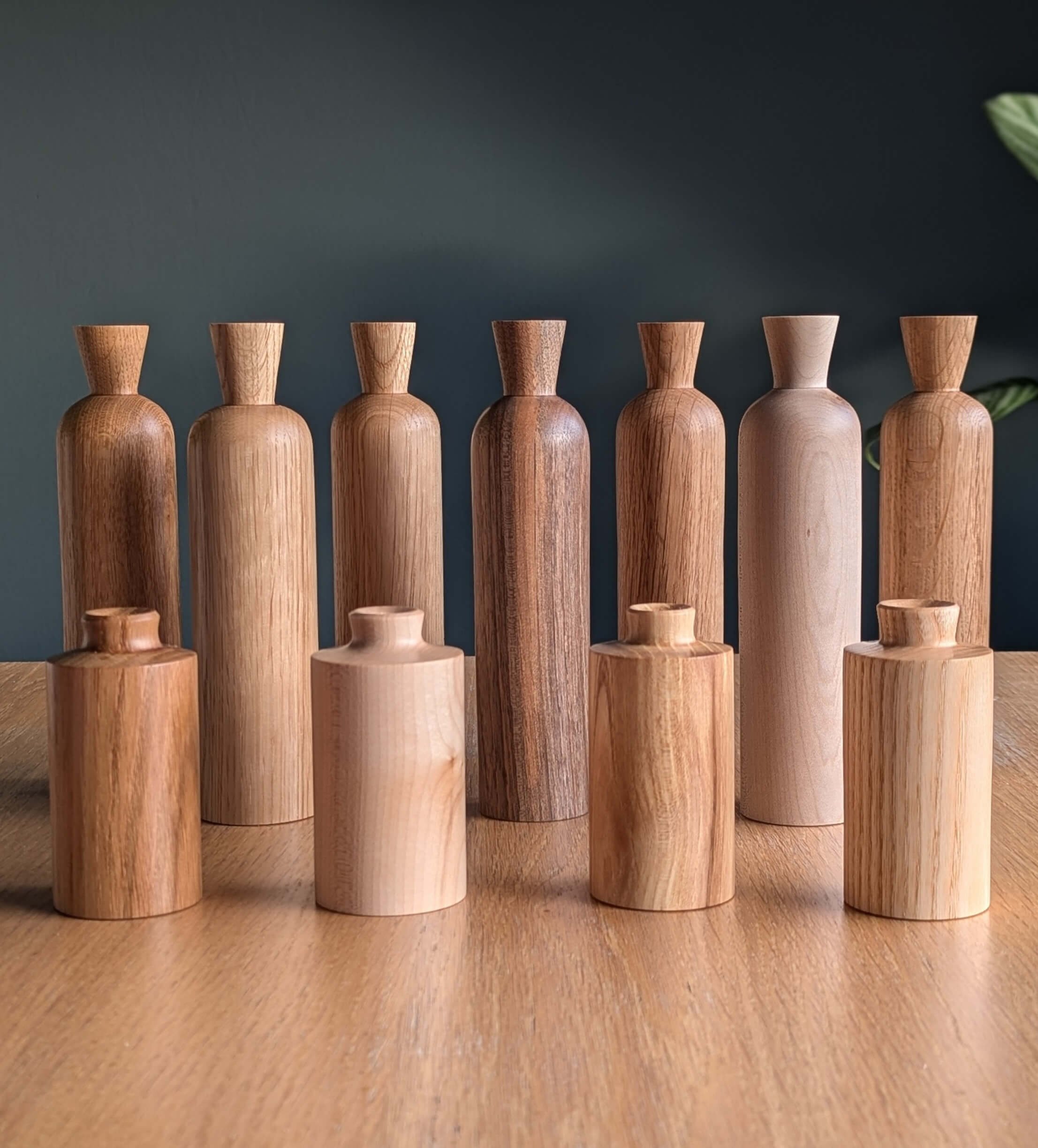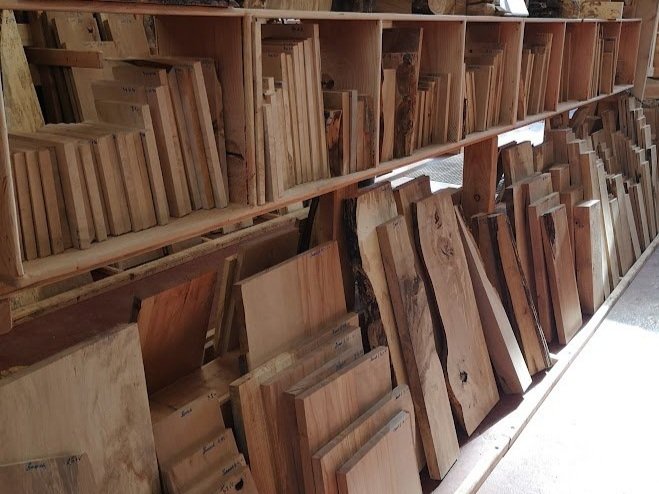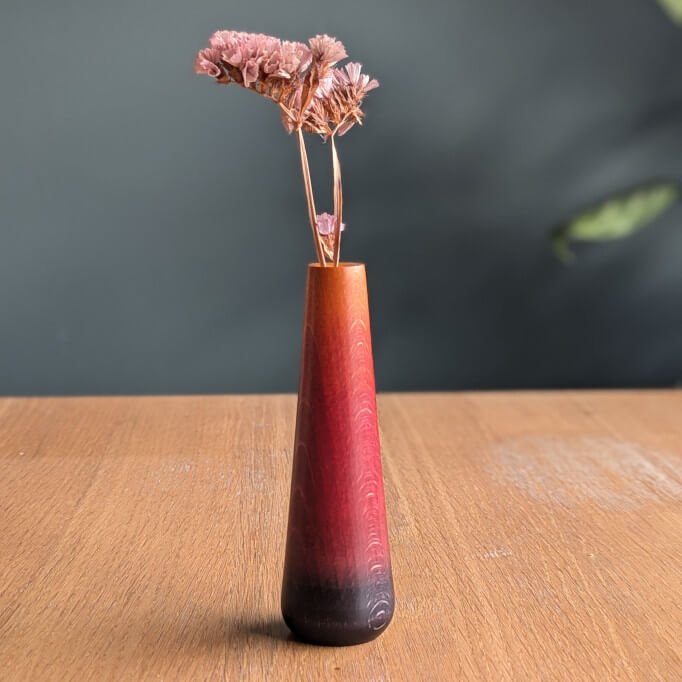Crafting with British Hardwoods: Material Choices
When it comes to crafting high-quality wooden products, the material plays an important role. Often this comes up during the conversations I have at craft fairs, where people are curious about what goes into my work.
I’m committed to using wood that not only looks stunning but also tells a story.
Here, I’ve answered some of the most common questions about the materials I use and why they’re so important to my craft.
Why do you choose specific types of wood for your products?
Every type of wood has its own character. I carefully select materials that bring out the best in my designs.
Oak, for instance, is strong and durable, with a rich grain pattern. This can add depth to bud vases or wooden bowls.
Ash is generally lighter in colour and has a striking grain. Making it ideal for contemporary decor.
Sycamore offers a smoother, subtler grain, perfect for minimalist designs.
While English walnut is a more rare and luxurious choice, with its deep tones and complex patterns.
Beech, especially spalted beech, holds a special place in my workshop. The spalting—a natural process where fungi create intricate patterns—turns ordinary wood into something truly extraordinary.
You are never sure what you're going to get until you start turning. That is an exciting element for me personally as the crafter.
Where do you source your wood
Sourcing wood responsibly is a priority for me.
I get my wood exclusively from British hardwood suppliers. These include the Wood Place in Lanarkshire, Scottish Wood in Fife, and WP Hardwood in Scotland.
Although I do sometimes use the internet to source timber from other countries within the UK, I try to prioritise local materials to reduce the environmental footprint of my work and support the local economy.
I enjoy the fact that often at a market I can tell a potential buyer where the wood for the piece they're looking at came from in the country.
What makes spalted beech so unique?
Spalted beech is one of the most fascinating materials I work with. All woods can spalt. But it is particularly common in Beech.
The natural patterns in the wood are created by fungi, resulting in streaks, lines, and areas of discolouration.
These patterns are completely unpredictable, which means no two pieces are ever the same.
Working with spalted beech feels like collaborating with nature.
How do you enhance wood grain?
The grain is one of the most important features of any wooden piece. I carefully orient the wood on the lathe to showcase its best patterns.
Finishing is equally crucial. I use natural oils and waxes to bring out the grain’s depth and protect the wood for years to come.
In some pieces, like my flame-dyed beech wooden bud vases, I use dyes to create bold designs while keeping the grain visible.
Do you use sustainably harvested wood?
Yes, sustainability is important. I buy wood from sources that practise sustainability, such as the Wood Place in Lanarkshire and Scottish Wood in Fife.
Sustainability isn’t just about the environment—it’s about creating timeless products that people will cherish for years.
Crafting with British Hardwoods
Every piece I create starts with a carefully chosen material that celebrates the individuality of British hardwoods.
By exploring the unique properties of each type of wood, I create items that are not only functional but also tell a story.
From the intricate patterns of spalted beech to the rich tones of English walnut, each product highlights the natural artistry of the wood itself.





